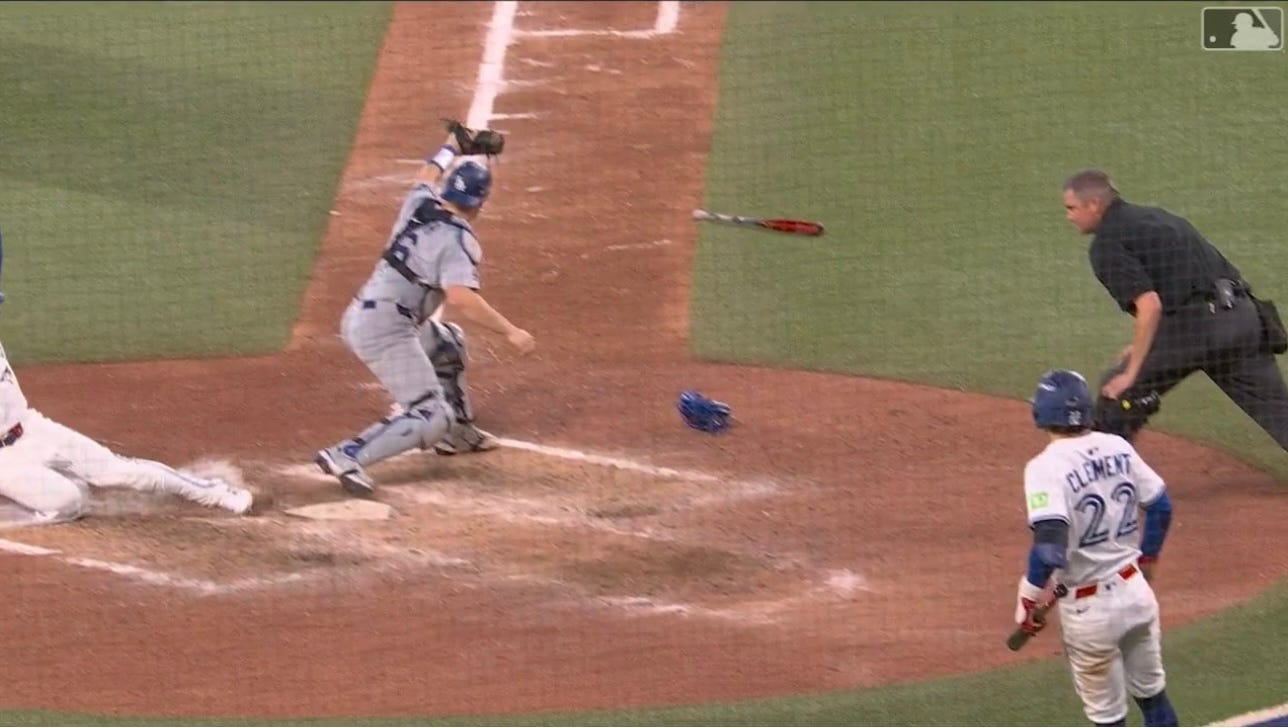The Ninety-Foot Truth
By Jim Reynolds | www.reynolds.com
Grook: The Balanced Eye
He bent to see the meeting point,
where motion meets intent.
The truth was there for anyone—
who knew what judgment meant.
I. The Ending Came Quickly
The Dodgers won it all on a sharp ground ball to Mookie Betts.
Bottom of the 11th. Bases loaded. The Blue Jays’ last hope at the plate.
Betts fielded the hop cleanly, stepped on second for the force, and fired to first.
Double play. Game, Series, done.
The Dodgers poured from the dugout — gloves and caps flying in a blur of blue and white.
The crowd in Toronto froze — not in disbelief, but in reverence.
It was baseball at its purest: motion, precision, consequence — all converging in a heartbeat.
But the play that said everything about America didn’t end the game.
It came two innings earlier.
II. The Play That Froze Time
Bottom of the ninth.
Game tied. Bases loaded. One out.
The winning run—Isiah Kiner-Falefa—ninety feet from immortality.
Varsho at the plate again.
He chopped a bouncer to second.
Rojas ranged right, nearly lost his footing, then gathered himself and fired home.
The stadium sound turned liquid—half roar, half prayer.
The ball reached catcher Will Smith a breath before Kiner-Falefa’s slide.
Smith’s left foot slipped off the plate, then snapped back down—just enough.
The plate umpire, Alan Porter, was perfectly positioned, leaning forward, hands on knees for balance, eyes locked on the collision of leather, dust, and destiny.
He saw everything—the ball, the plate, the cleats, and time collapsing to zero.
He called it.
Out.
No hesitation. No flinch. Replay confirmed what everyone already knew:
In an age of pixels and pause buttons, a human being had made the perfect call in real time.
III. Three Seconds, Infinite Variables
It lasted maybe three seconds, yet contained a lifetime of what-ifs.
If Varsho’s chopper had bounced one foot higher, the throw would’ve been late.
If Rojas hadn’t regained his balance, it would’ve sailed.
If Smith couldn’t find the plate with his foot—Toronto wins.
And if Kiner-Falefa had edged five feet farther down the line before the crack of the bat—there’s no play at all.
A different bounce, a half-step, a breath of hesitation—any variable changes, and Canada explodes in celebration.
That’s the knife-edge where life unfolds: one play, a handful of inches, and the fragile line between triumph and loss.
Perhaps if the runner had taken that extra risk—just five feet more—we’d be talking about The Seventy-Five-Foot Truth, and there’d be a different World Series champion.
The difference? The lead from third is preparation, judgment, and risk; everything else is reaction—even the umpire’s monumental call.
IV. The American Instinct for Fairness
Baseball proves that competition doesn’t require hatred.
Opponents battle for eleven innings, fans scream themselves hoarse, but when it’s over, no one storms the field in rage.
The rules are clear, the contest is fair, and even heartbreak feels honest.
That’s the moral marrow of the game.
We crave fairness, transparency, competence.
We will live with defeat, but not with deceit.
In that instant behind home plate, America saw what justice looks like when it works:
a man in blue, steady amid chaos, making the call that everyone could trust.
Not perfect technology, but perfect judgment.
Not algorithms or committees—just one trained eye finding truth where motion meets intent.
And that’s all we ask.
Competence. Courage.
Fair play in a world of fog.
The umpire gave us that.
And for one heartbeat in November, the whole country remembered what it feels like when the call is right.
Epilogue — Casey Revisited
Some say it ended fair that night, with skill and truth agreed,
But others whisper softly still—
the mighty Casey didn’t take a big enough lead.




Hey Crutch, the secret is velocity of speech.
Thanks for noticing. I love that umpire dude. When I watched it live he was the man I was focusing on. What a professional. Jim
Wow, like I was there. I don't watch any baseball but you made it so real. Thank you